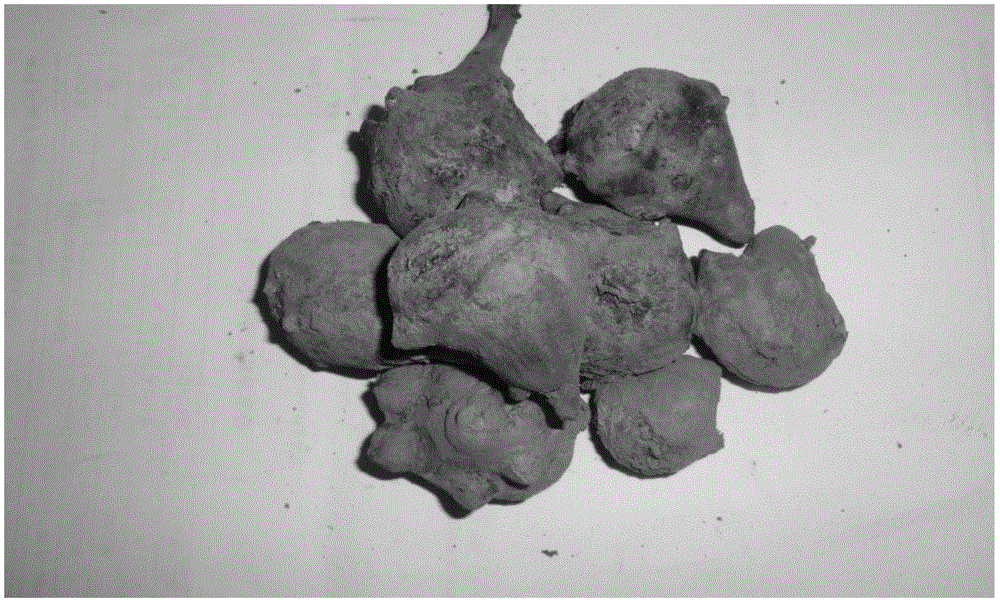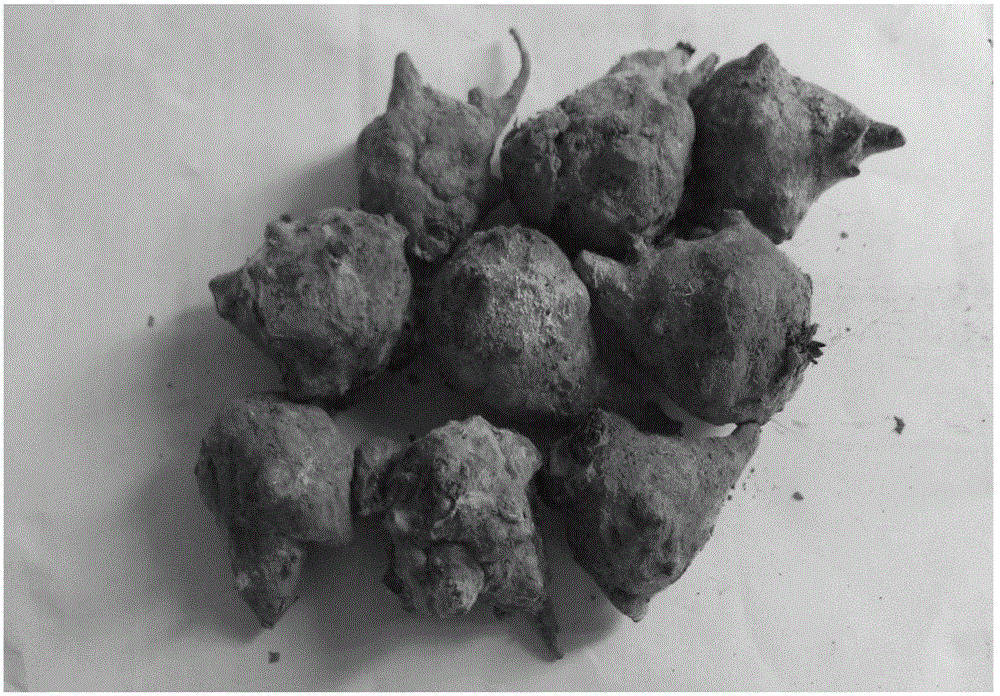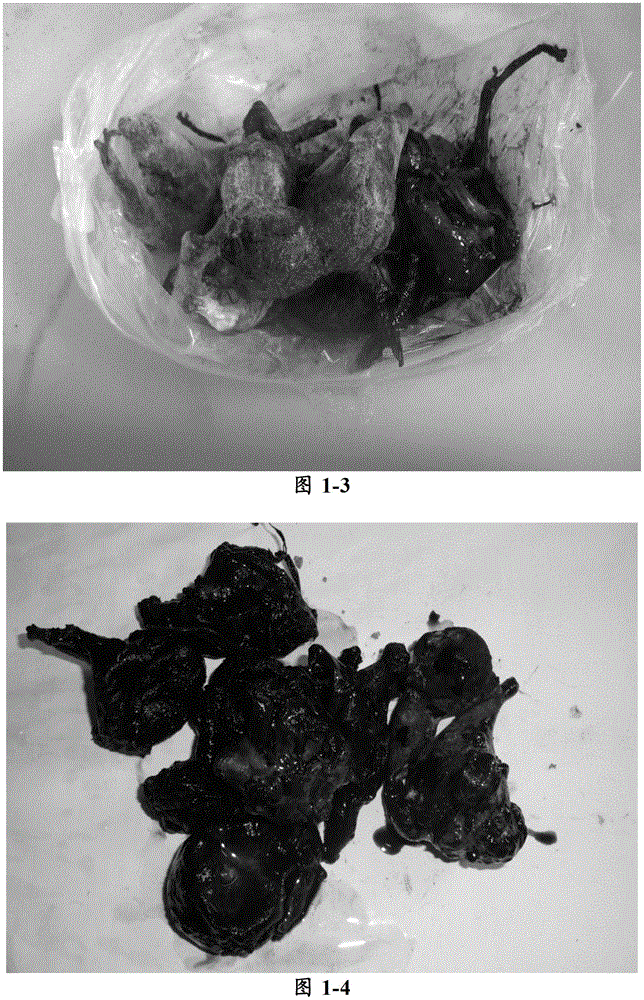Monkshood product and fresh-keeping method thereof
A fresh-keeping method and aconite technology, which are applied to the fresh-keeping method and product field of aconite, can solve the problems of perishability of medicinal materials of aconite during storage, and achieve the effects of facilitating the quality of decoction pieces, retaining medicinal components, and reducing waste water treatment and pollution.
- Summary
- Abstract
- Description
- Claims
- Application Information
AI Technical Summary
Problems solved by technology
Method used
Image
Examples
Embodiment 1
[0080] The aconite preserved in the natural condition of embodiment 1
[0081] Take the aconite, pick out the rotten and damaged aconite, wash it into 1000kg, put it into a nylon mesh bag (50*80cm), pack it into 20 bags in total, and put it in a warehouse at room temperature (20°C). The net bag of this storage is carried out experiment and sampling inspection, and the results are shown in Table 1:
[0082] The character change of the aconite preserved under the natural condition of table 1
[0083]
[0084] Conclusion: Aconitum medicinal materials are stored at room temperature (20°C), and they begin to deteriorate within 24 hours and rot within 36 hours. Therefore, without any treatment, aconite medicinal materials can be stored for up to 1 day (24 hours).
Embodiment 2
[0085] Embodiment 2 traditional fresh-keeping technique (soaking gallbladder)
[0086]Get mud aconite (same batch as in Example 1), pick out moldy and damaged aconites, wash to obtain 1000kg of clean aconites, put them into the soaking tank, add soaking liquid, and take the soaking liquid to cover the aconites. The preparation standard of the soaking solution used is gallbladder: water = 60:40 (that is, the saturated solution of gallbladder).
[0087] Among them, gallbladder is a product obtained by removing impurities (bromine, iodine) from the mother liquor of underground yellow brine after table salt is removed, and concentrated by evaporation. It mainly contains calcium chloride (CaCl 2 2H 2 O), usually used to make aconite, also commonly known as brine, which contains a small amount of magnesium chloride, sodium chloride and metal ions. It has a strong corrosive effect on the stomach, coagulates the protein of human organs, and after magnesium ions are absorbed, it can ...
Embodiment 3
[0097] Embodiment 3 Low-temperature fresh-keeping preserves aconite
[0098] Take mud aconite (the same batch as in Example 1), pick out the moldy and damaged aconite, wash to obtain 400 tons of clean aconite, divide it into 4 parts, each 100 tons, and put them into a 50*80cm nylon mesh bag , set the temperature of the four cold storages A, B, C, and D as A.13°C (13±2°C is 11-15°C) and B.8°C (8±2°C is 6-10°C ), B.3°C (3±2°C is 1~5°C), D.-3°C (-3±3°C is -6~0°C cold storage temperature), where the size of the shelf in the cold storage is 1m *1m*1.5m, the gap between each shelf is 50cm, and the area of each cold storage is 100m 2 , the relative humidity is 80%. Put the four copies of aconite in four cold storages for storage, such as Figure 6-1 (B cold storage), and then sampled the aconites in the four cold storages after 1 week, 2 weeks, 3 weeks, 1 month, 2 months, and 3 months. Wherein the change results of appearance traits are shown in Table 4, the measurement results...
PUM
 Login to View More
Login to View More Abstract
Description
Claims
Application Information
 Login to View More
Login to View More - R&D
- Intellectual Property
- Life Sciences
- Materials
- Tech Scout
- Unparalleled Data Quality
- Higher Quality Content
- 60% Fewer Hallucinations
Browse by: Latest US Patents, China's latest patents, Technical Efficacy Thesaurus, Application Domain, Technology Topic, Popular Technical Reports.
© 2025 PatSnap. All rights reserved.Legal|Privacy policy|Modern Slavery Act Transparency Statement|Sitemap|About US| Contact US: help@patsnap.com



